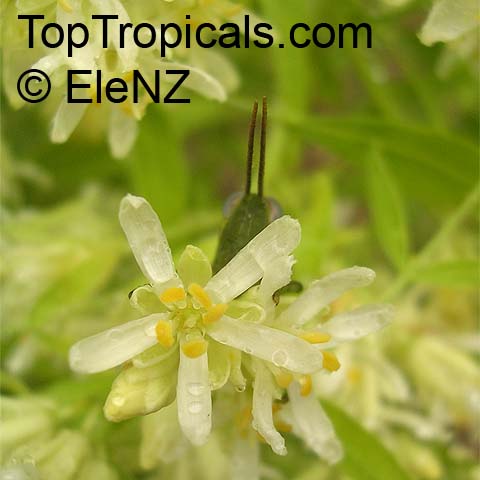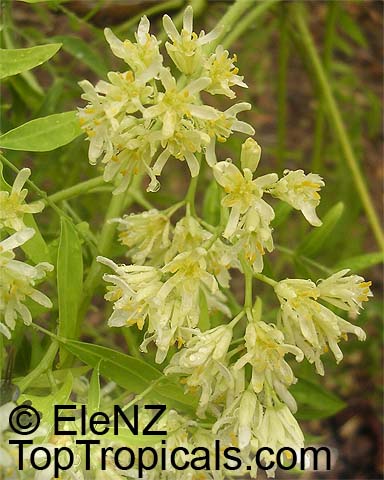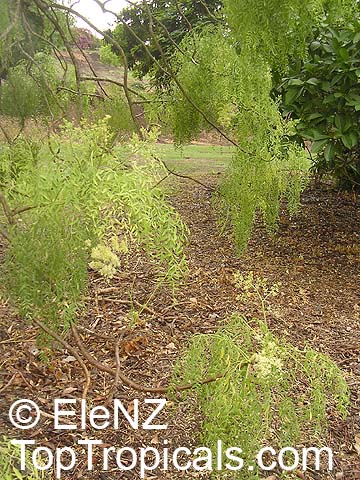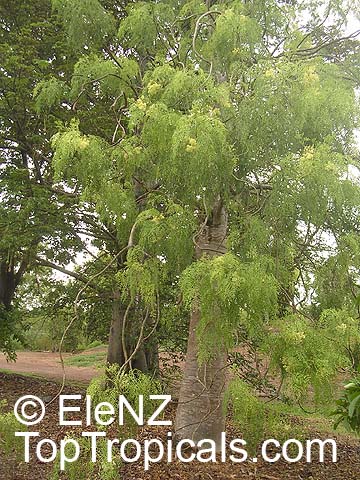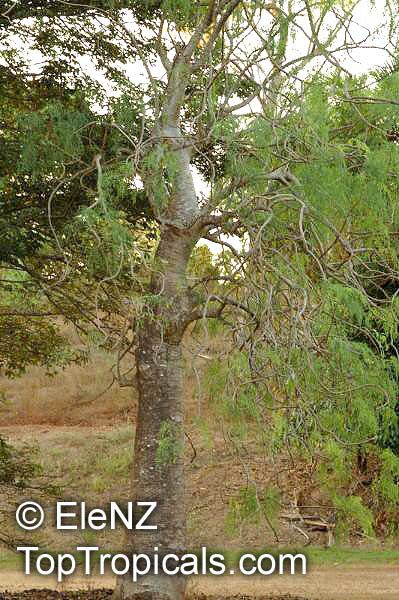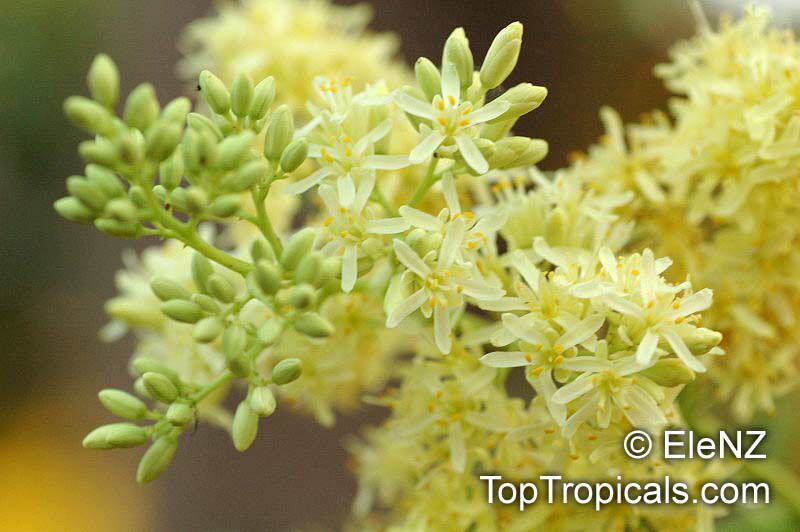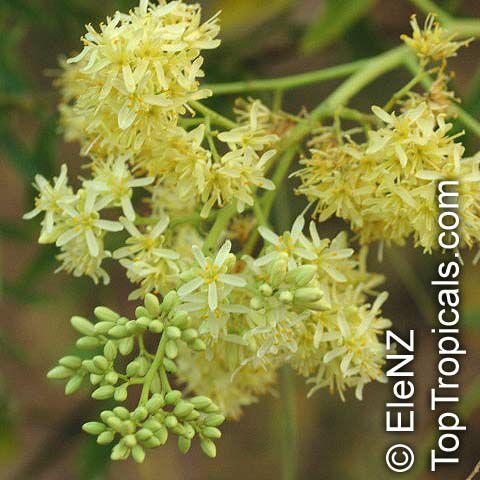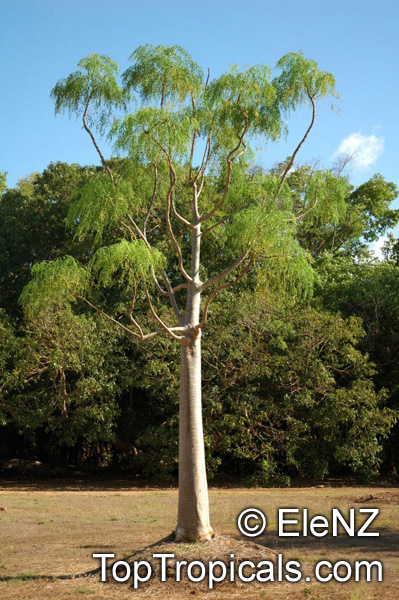Moringa drouhardii (Malagasy Moringa)
Top Tropicals Plant Encyclopedia
Botanical name: Moringa drouhardii
Common name: Malagasy Moringa
Family: Moringaceae
Origin: Madagascar







Moringa drouhardii is a large tree and can grow taller than 20 feet with a distinctive swollen trunk. It is native to Madagascar and grows in scattered stands in the southern Malagasy dry forest on limestone. It is a fast-growing tree, often surpassing three meters in its first year. The leaves are alternate, typically pinnate, and finely toothed. The flowers are yellow to orange and fragrant, often forming in clusters in the leaf axils. Moringa drouhardii has the potential to attract butterflies and hummingbirds when blooming.
In USDA Zone 9-11, Moringa drouhardii can be grown in full sun in moderately moist soil. It will benefit from a deep, occasional watering. A layer of mulch is beneficial and can help maintain soil moisture. When grown in a pot, Moringa drouhardii will do best in warm regions and should be brought inside during the colder months. If growing in cold regions, the pot should be insulated and stored in a warm and frost-free location.
Moringa drouhardii has been used for thousands of years for its ethnomedical properties. It is still used medicinally and the leaves, bark, and seed pods are the most frequently used parts of the tree. The leaves are very nutritious and contain a numerous of vitamins, minerals, and antioxidants.
